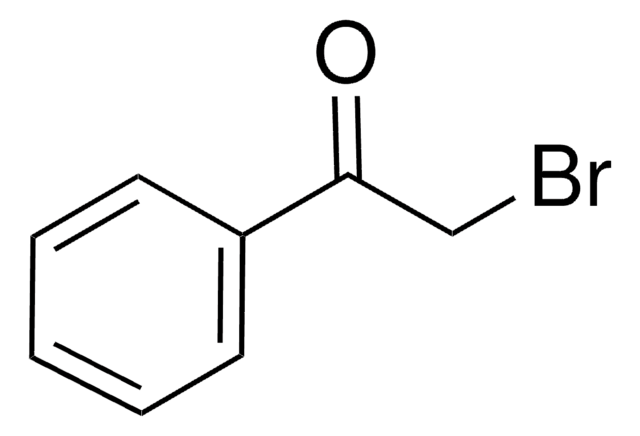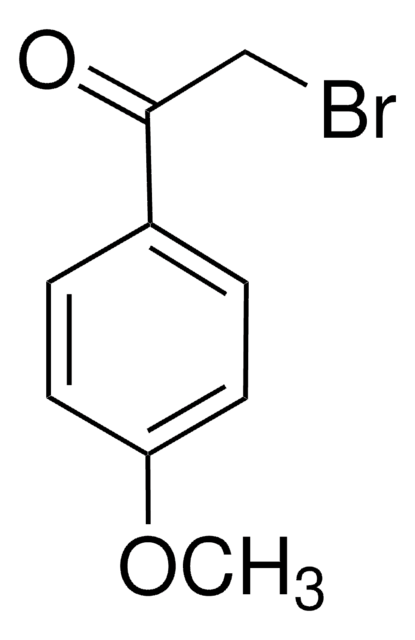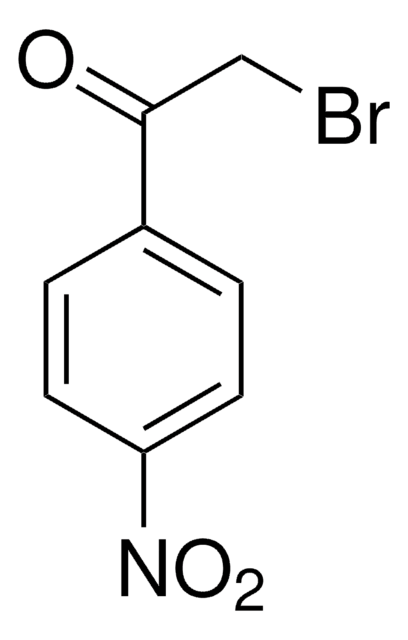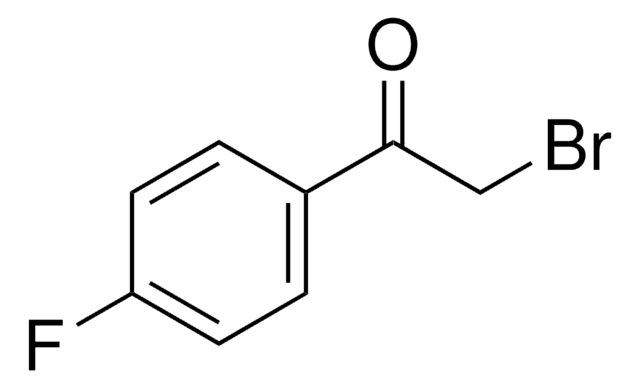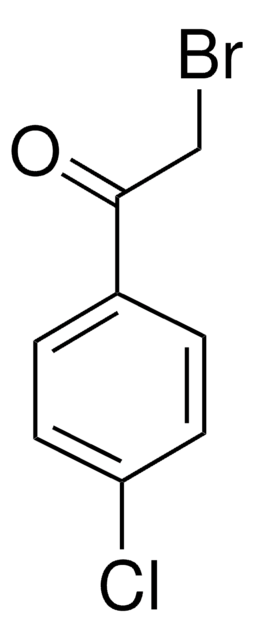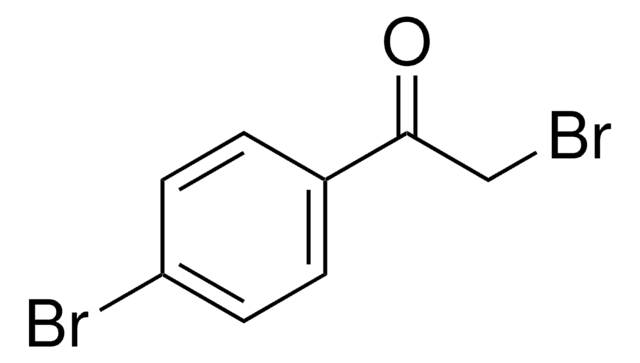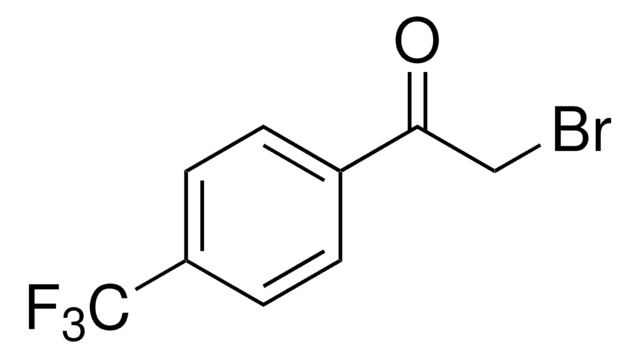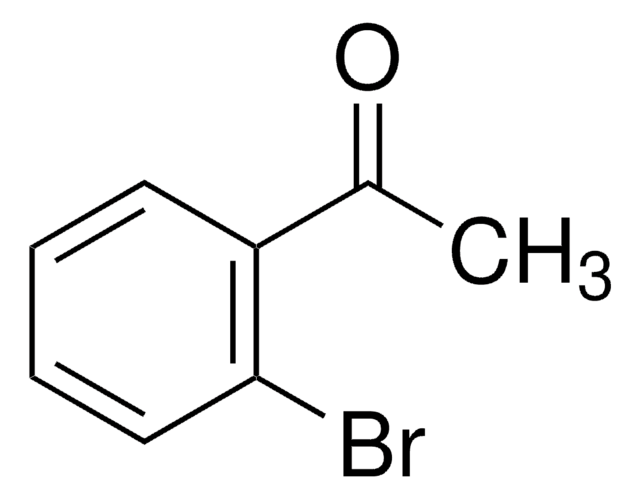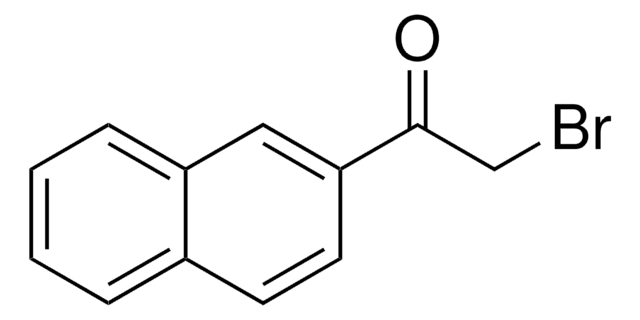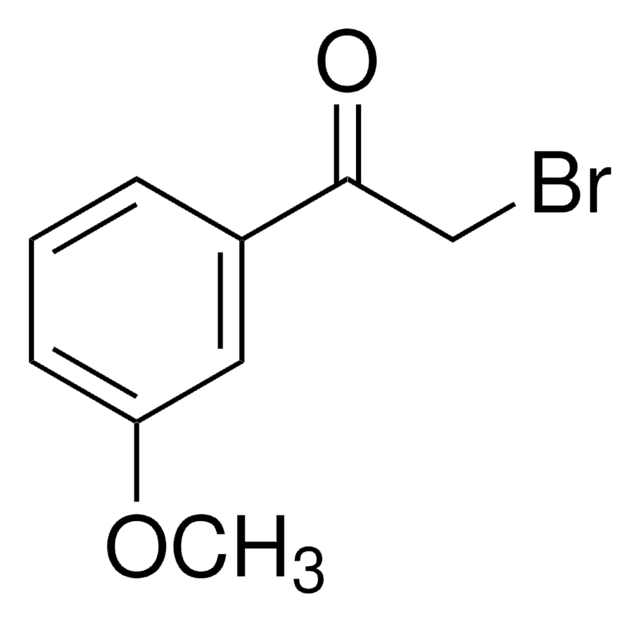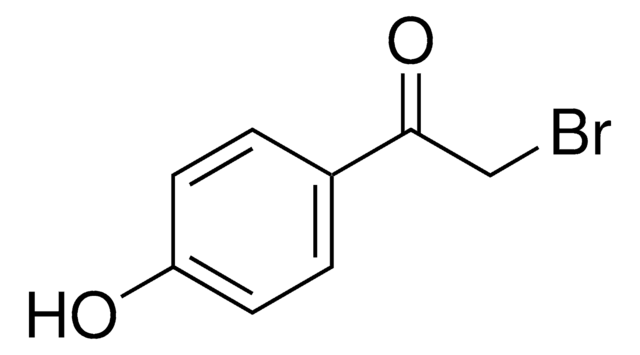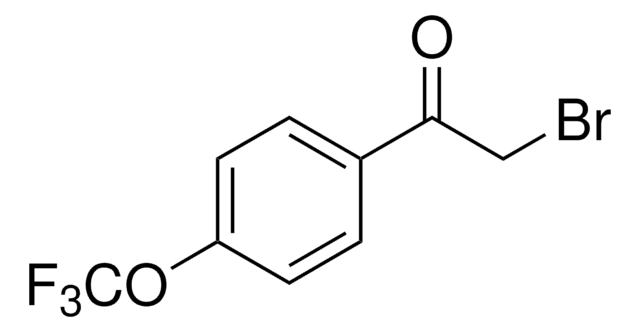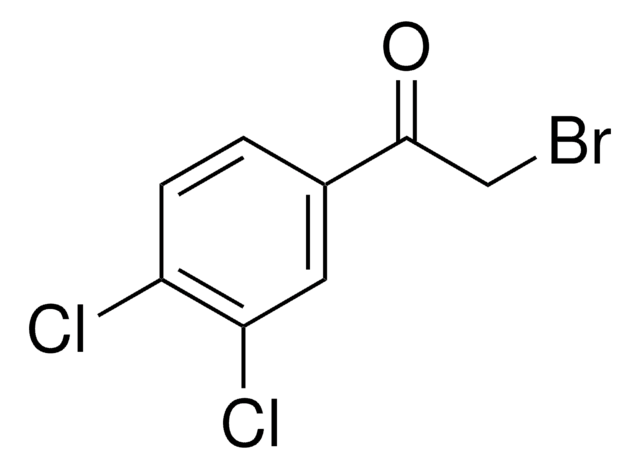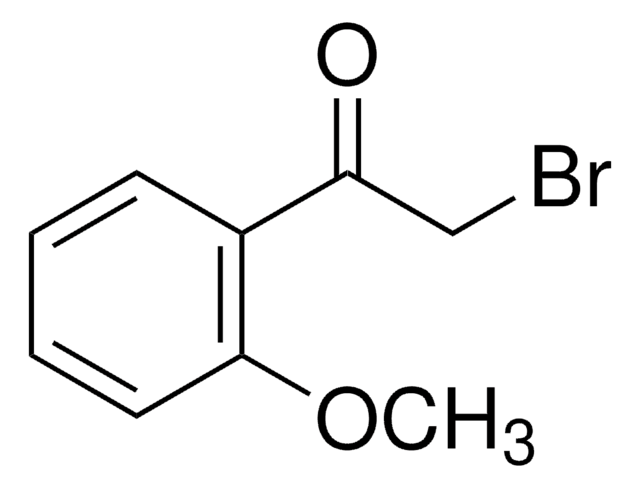About This Item
Recommended Products
Quality Level
assay
90%
bp
105 °C/0.1 mmHg (lit.)
mp
45-49 °C (lit.)
storage temp.
2-8°C
SMILES string
Cc1ccc(cc1)C(=O)CBr
InChI
1S/C9H9BrO/c1-7-2-4-8(5-3-7)9(11)6-10/h2-5H,6H2,1H3
InChI key
KRVGXFREOJHJAX-UHFFFAOYSA-N
Related Categories
General description
Application
signalword
Warning
hcodes
Hazard Classifications
Eye Irrit. 2 - Skin Irrit. 2 - STOT SE 3
target_organs
Respiratory system
Storage Class
11 - Combustible Solids
wgk_germany
WGK 3
flash_point_f
235.4 °F - closed cup
flash_point_c
113 °C - closed cup
ppe
dust mask type N95 (US), Eyeshields, Gloves
Certificates of Analysis (COA)
Search for Certificates of Analysis (COA) by entering the products Lot/Batch Number. Lot and Batch Numbers can be found on a product’s label following the words ‘Lot’ or ‘Batch’.
Already Own This Product?
Find documentation for the products that you have recently purchased in the Document Library.
Customers Also Viewed
Our team of scientists has experience in all areas of research including Life Science, Material Science, Chemical Synthesis, Chromatography, Analytical and many others.
Contact Technical Service